The I-5 Killer Read online
Page 4
A call for assistance from the Oregon State Police Crime Lab had gone out shortly after ten P.M., and Kominek was joined in the eerily empty building at twelve-thirty A.M. by his lieutenant, Kilburn McCoy, and Lieutenant William Zeller and Criminalist Ray Grimsbo from the state crime lab in Portland. The need for haste was gone. There was time now for hours and hours of painstaking work to retrieve physical evidence.
The red Ford Bronco (mistakenly described as "green" by Beth in her terror) was still parked outside the building, keys in the ignition, engine still running. There were two women's purses inside, and the rear window was rolled down, revealing cleaning equipment.
The lunchroom — where the attack had taken place — was at the end of a short hall leading from the front door of the TransAmerica Building. The floor of the room was strewn with clothing and paraphernalia left behind by the fire-department medics. Two pools of blood, their perimeters already beginning to dry in darker segments like mud around a pond in deep summer, were at the end of the counter — mute testimony marking where the victims had lain.
Small-size clothing lay where the garments had been dropped at the gunman's order: two pairs of blue Jeans; a brown-and-white sweater; a blue-and-white sweatshirt; a pair of lavender panties; a pair of green-and-pink bikini panties; a size 32D brassiere — heavily bloodstained; a woman's white imitation sheepskin jacket; a woman's brown leather jacket; a pair of brown shoes, their laces still tied; and a pair of blue-and-yellow running shoes, their laces also firmly tied. All of this clothing clearly had belonged to Shari and Beth.
There were no clothes left behind by the gunman.
A ring of keys rested in the middle of the carpet. But when Kominek tried them in the TransAmerica Building's front door, they proved to be, as he had feared, only keys to the building.
There were bullets — one .32-caliber slug caught in the folds of the white coat, and a second, similar bullet nestling on the carpet where the rug abutted the sink counter. The path of this second bullet could be traced. There was an indentation in the cabinet door below the sink, and strands of Shari Hull's light brown hair were embedded in the spot where the bullet had struck the door and ricocheted. There was a hole five inches below the indentation in the cabinet door. Inside the cabinet, a plastic cleanser can showed damage where the bullet had bounced off it.
Blood had sprayed over the walls as well as the carpet, and there were smears of red on the phone Beth had used to call for help. Grimsbo's report noted "white viscous material" (which would prove disappointingly not to be semen when tested) that had seeped into the carpet. The clothing was bagged and labeled, and the bullets placed carefully in containers that would preserve them just as they had been found. Slides were taken of the blood that seemed to be everywhere in the room.
Finally the room was vacuumed carefully, so that all the gunpowder particles, all the hairs, and whatever other debris might have been left could be saved.
That was all the investigators had as the dawn of January 19, 1981, slowly broke. If they did not find a gun to match the bullets to, if Beth Wilmot did not survive, or if she could not identify some suspect they might come up with, if his semen should prove to have come from a man who was not — like 85 percent of the population — a "secretor" of blood type in his bodily fluids, there was every chance the crime might never be solved. All detectives agree that the hardest kind of murder case to solve is one in which the victim and killer are strangers to one another; there are no prior threads of confrontation to weave into a meaningful pattern.
The big man who had wrought such havoc on Shari Hull and Beth Wilmot was out there somewhere, but Dave Kominek had no idea who he might be.
CHAPTER 3
Dave Kominek attended the autopsy of Shari Hull's body at the Howell Edwards Doerksen Funeral Home in Salem, and took the pictures that are a necessary part of a homicide case file.
Dr. Ray Patton did the postmortem exam. There were no surprises. Shari's skull had been fractured on the right side; bullets had plowed into the left side of her neck, the right side of her skull three inches above her right ear, and the back of her head. A fourth wound appeared to be an exit wound. Fragments had entered the right temple area and virtually obliterated the center of her brain. Shari's hair — like Beth's — was blackened with the debris of the gun barrel, a barrel held so close to her head that the killer could not possibly have missed. The wounds were "execution-style" wounds; the gunman had fired at point-blank range into the back and right side of the helpless girl's head. There were no defensive wounds on Shari's hands. She had gone down without a fight. Seeing the damage to Shari, Kominek marveled that Beth could have taken the same bullets and lived.
While Beth Wilmot continued her almost miraculous recovery, detectives from the Marion County Sheriff's Office considered the problem of tracking the man who had irrevocably changed his victims' lives in a twenty-minute spate of mindless violence. The case was a natural-born "loser." The killer was a stranger to both girls: Beth was still positive she had never seen him before, and she had sensed that Shari didn't know him either.
The physical evidence the investigators from Marion County had gleaned was pathetically sparse: the most important items were the bullets. Criminalist Ray Grimsbo reported that tests had isolated certain characteristics in the slugs. The bullet retrieved from the sink in the lunchroom at the TransAmerica Building was in fairly good shape. It was a .32-caliber lead bullet fired from a weapon with a right-hand twist, and with five lands and grooves etched into its surface by the gun's barrel. The gun they were looking for had a barrel land measuring 0.083 inch, and a barrel groove width of 0.103 inch. The other whole bullets had been removed from the victims' bodies and were badly flattened and damaged, as well as stained by the girls' blood. Still, several of them were intact enough so that Grimsbo could determine that they fit into the same class and characteristic parameters of the first bullet. At this point they were useless, but if and when a suspect gun was located, Grimsbo would be able to tell if that gun had fired the fatal bullets.
Feeding the specifications into a computer linked to the FBI's National Crime Information Center, Grimsbo received the information that the bullets had "most likely" come from the following revolvers or non-semiautomatic weapons: a Smith and Wesson Double Action-Third Model, a Harrington and Richardson Model 1905 or Young America-Bull Dog, a Meriden Fire Arms Company pocket revolver, or a Thames Arms Company pocket revolver. Guns of these makes were available to Grimsbo, and test-firing had elicited the same right-hand twist, with five lands and grooves. It was possible, however, that there might be other weapons which would fire in the same pattern.
Where the death gun was, however, was anybody's guess. The killer might still have it with him, or he might have thrown it away — possibly in one of the many rivers that abound in Oregon. If he still possessed the gun, he might use it again, and if he did, there was a chance that some other police agency would impound it.
If …
Beyond isolating the weapon the killer had carried, the Oregon State Police Crime Detection Lab criminalists had been able to determine the blood type of the killer by testing the semen-soaked swab taken from Beth's throat. The material was positive for viable spermatozoa, and — most important — the semen had come from a man who was a "secretor." The killer had either Type A or Type B blood. More than half of all people are A and/or B secretors, although B secretors are far less common, less than 9 percent of the population. This information might serve to build a preponderance of evidence against a suspect.
The smallest piece of possible physical evidence they had picked up was listed on the evidence manifest sheet. At the time, it did not seem that it would be particularly vital to the probe. Grimsbo, Zeller, and Kominek had found one coarse, almost black pubic hair on the rug of the lunchroom. It would not match either of the victims' pubic hairs in class and characteristics under a scanning electron microscope. It might have come from the killer, and it was of Caucasian origin. But,
like the blood-type classification, hair is only probable physical evidence — not absolute. Although it was not likely that the unknown pubic hair had come from one of the officers or medics at the crime scene, since they had all been fully clothed, they had to be positively eliminated as sources. Dave Kominek contacted all of the paramedics and all of the police personnel and asked them to submit a sample of their pubic hair.
Kominek would later recall with a grin,
"I went out to the fire station and handed everyone a comb and a small plastic bag. They looked at me at first as if I was nuts, and asked if I'd given up police work and become a Fuller Brush man giving away free samples."
None of the hairs gathered matched the dark pubic hair retrieved from the crime scene.
The vicious attacks on Beth and Shari appeared to be a tragedy born of opportunity. This killer had to be a random, senseless murderer, one of the new breed of killers who began to rove America in increasing numbers during the seventies. The profile of murder had changed, so subtly at first that lawmen didn't pick up on it, but the dramatic increase in random murder can no longer be ignored.
Always before, there were rules of thumb that detectives could trust when it came to homicide suspects: look with suspicion first upon relatives and friends of the victim. Familiarity sometimes breeds murder. Look next for someone with a motive that makes sense: jealousy, greed, revenge.
But by 1981 the rules had changed. In 1966, only 5.9 percent of all homicides could have been considered "random and senseless" by the researchers for the FBI's Uniform Crime Report — 644 victims killed in the entire United States for no apparent reason. That meant that more than ten thousand murder victims had been killed by someone who had a motive that, while hardly condoned, could be explained. Explainable motive makes for a high incidence of successful case closures, and nationwide the statistics looked good on the charts. Eighty-eight percent of all murders in America were solved in 1966; 1,310 murders went unavenged.
Shari Hull would become a statistic in the Uniform Crime Report for 1981, and · those figures, when compared to 1966, would be horrendous. By the end of 1981, 17.8 percent of all murders were deemed random and senseless, perpetrated for reasons no rational mind could understand: 22,519 murder victims in 1981 — more than double the number fifteen years earlier in 1966; 4,007 of those victims killed in 1981 had died for no discernible reason.
Not surprisingly, the successful closure rate on homicides dropped dramatically in 1981, when only 72 percent of killers were brought to justice, and that meant that 6,304 murder cases would end up in the loser files.
In late January 1981, the murder investigation in Shari Hull's case seemed almost hopeless. The responsibility for solving her murder would fall most heavily on the shoulders of Detective Dave Kominek and Corporal Monty Holloway. They knew their chances of finding the dark-eyed man in the hooded jacket were almost nil. Beth and Shari would have made attractive targets as they worked alone in the building whose lighted windows made it a fishbowl. The killer had seized the opportunity and then vanished into the night — perhaps forever.
The task of eliciting an in-depth statement from Beth Wilmot fell to Dave Kominek. When he talks with other detectives, Kominek can be brusque and businesslike, so caught up is he in trying to work through a case to a successful conclusion. But with victims Kominek is a different man. His sympathy for their losses is apparent; his kindness allows them to tell him things that might seem unspeakable.
Beth Wilmot would come to think of Dave Kominek as a big-brother figure, someone she could talk to through the months ahead. And the months that lay ahead would not be easy.
As Beth lay recovering from surgery in Salem Memorial on January 19, her room was under heavy guard. Shari Hull's killer had left the TransAmerica Building confidently, sure that he had silenced all witnesses. Beth Wilmot's survival had made headlines in Portland and Salem papers, and when the killer heard the news that one of his victims still lived, there was a chance that he might come back and attempt to silence her.
Dave Kominek met Beth for the first time on the day after the shootings. He had seen accident and assault victims before, of course, but it was still appalling to see Beth's puffy, bruised face. Her blackened eyes made it impossible to tell what she had looked like before the attack.
Despite her injuries, Beth Wilmot was anxious to give a statement. Whatever she might have forgotten immediately after the incident, she remembered everything now.
Beth explained that she had known Shari Hull for a long time, that they had been best friends. Shari's family had welcomed Beth into their home when she moved to Salem from Spokane, Washington, to find a job, and both young women had been doing some work for Shari's father's janitorial service. The TransAmerica job was their Sunday assignment. It usually hadn't taken them very long, as the building was basically kept very clean and it was new.
Explaining how she and Shari had come to be in the building was the easy part. Beth's voice dropped, and she looked away from Kominek, staring at the window, where raindrops spattered and then melted into each other.
"Tell me what you can remember, Beth," Kominek began. "Just take your time. Tell me about going to work that night."
Beth sighed and nodded. "We went out there about nine-ten or nine-fifteen, and we were all done cleaning in about twenty minutes … but then I noticed that a window was dirty, and I went to the back room to get a spray bottle.
"The man must've saw us cleaning alone, 'cause Shari went to empty the garbage alone. She did that without telling me. We usually empty it together. I got done vacuuming and she just got done cleaning and emptying the garbage. I went to the back room to get the spray bottle. She was near the door or something, and when I got to her, he was there pointing the gun at both of us. I guess he just walked in."
Beth paused, and tears came into her eyes. "He killed my best friend."
"Try to tell me about it, Beth. Tell me the words he said, and tell me what you and Shari said," Kominek prompted softly.
Beth explained that the only place in the whole building blocked off from view of anyone in the parking lot or on River Road was the lunchroom — that that was the room where the intruder herded them.
"He said, 'In the back room — both of you. Both of you take off your clothes. Strip. All of them. Get down, and stay down.' He told Shari to take it all off, and I said, 'My dad will be here pretty soon.' "
It had been a pathetic lie; Beth said that she knew there was no chance that anyone would come to save them. She had hoped that she could frighten the big man off, but he wasn't buying her story.
"Shari was hesitating. She didn't want to take her bra off. He said, 'Come on, now, take it all off.' He made us kneel on the floor and he was standing up." Beth closed her eyes and asked if she had to tell everything that the man had done to them. Kominek told her that it wouldn't be her own words speaking — that she would only be repeating what the killer had said.
She explained that the man had unzipped his jeans and exposed himself, and then he had demanded that the girls fellate him.
"What did he say to you? Remember, what you tell me will be his words — not yours."
Beth closed her eyes and took a deep breath.
"Okay. He was talking to Shari, and he said … he said, 'Suck on me. Come on, make me come.' And then he said to me, 'You suck on my balls.' He told both of us, 'You make me come. Both of you suck on me.'
"He told Shari, 'Play with yourself,' and she said no, and then he told me to suck on Shari's breast. I did, but I faked it.
"He told me to stand up and spread my legs apart so he could have intercourse with me. His penis wouldn't go in, and he said, 'Shit, you've got a tight cunt.' "
Beth Wilmot talked very softly, spilling out the details of the savage attack she and her friend had endured for some twenty minutes. Twenty minutes that had seemed like hours. Beth had thought only of placating him, feeling that that was the one way they might survive. But, Beth said, Shari h
ad reacted with something close to hysteria, crying uncontrollably as the dark-complexioned man gave his orders. Shari's bubbling panic had seemed to set the man off, making him edgy and angry. He had changed for the worse when Shari had given in to hysteria.
"Eat me," he'd commanded, standing triumphantly over the kneeling, naked girls. "Which one of you wants to eat me?"
"He made Shari go first, and then me, and then both of us at the same time."
Beth turned her face away. "He came … finally. We thought he was done with us. He told us to lie down on the ground - facedown on the floor. He was asking us for rope. He said, 'I need some rope. Do you guys have any rope? Do you know where any is?'
"We both said no. And then Shari said, 'Don't hurt us. Please don't hurt us. We won't tell anyone. Just let us go.' Shari was crying and begging, and I was saying, 'Please, please, don't hurt us. We won't tell anyone.' "
Beth had wanted to tell Shari that she should be quiet, that her crying and screaming were making the man crazier — but she was afraid to speak out loud.
"He was quiet for about five seconds, standing over us. We could hear him breathing, and it was like he was trying to decide."
Dave Kominek noted that Beth had begun to tremble, almost imperceptibly at first, and then more violently. She caught her hands together, trying to maintain some kind of composure.
"And then … ?" he asked quietly. "And then what happened, Beth?"
"Then a shot goes off. I think that he shot Shari first, and then he shot me … and then he shot Shari again … and then me. And then a final shot to Shari. After the first shot, I just lay as still as I could and pretended to be dead. Shari kept moaning, and maybe that's why he shot her the last time. I was praying and hoping that she was pretending to be dead too. After he shot me the second time, I couldn't hear anything but ringing in my ears. I was afraid to get up because I couldn't hear if he was still there or not.

 Too Late to Say Goodbye: A True Story of Murder and Betrayal
Too Late to Say Goodbye: A True Story of Murder and Betrayal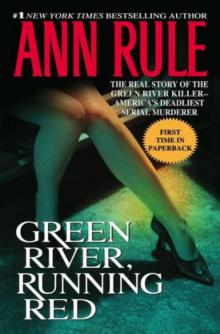 Green River, Running Red
Green River, Running Red Bitter Harvest
Bitter Harvest Dead by Sunset: Perfect Husband, Perfect Killer?
Dead by Sunset: Perfect Husband, Perfect Killer?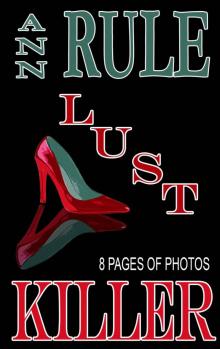 Lust Killer
Lust Killer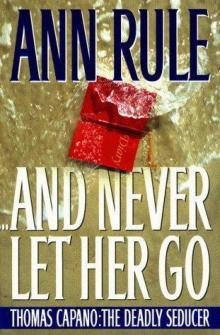 And Never Let Her Go: Thomas Capano: The Deadly Seducer
And Never Let Her Go: Thomas Capano: The Deadly Seducer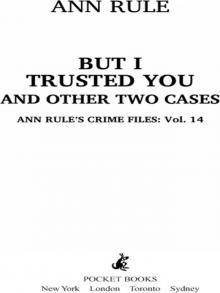 But I Trusted You and Other True Cases
But I Trusted You and Other True Cases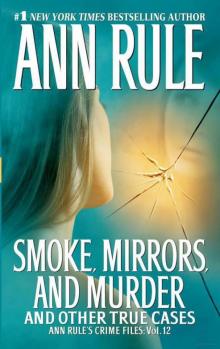 Smoke, Mirrors, and Murder and Other True Cases
Smoke, Mirrors, and Murder and Other True Cases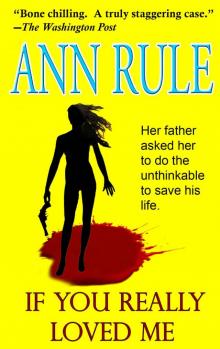 If You Really Loved Me
If You Really Loved Me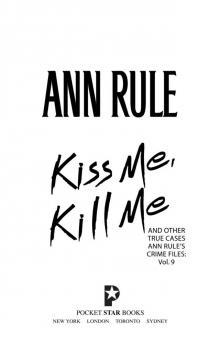 Kiss Me, Kill Me and Other True Cases
Kiss Me, Kill Me and Other True Cases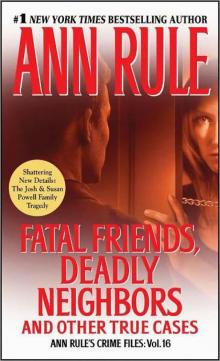 Fatal Friends, Deadly Neighbors and Other True Cases
Fatal Friends, Deadly Neighbors and Other True Cases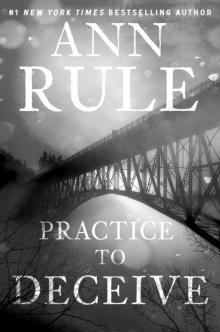 Practice to Deceive
Practice to Deceive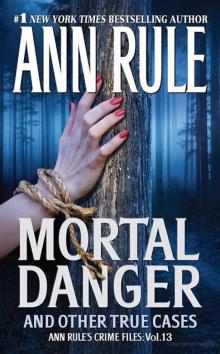 Mortal Danger and Other True Cases
Mortal Danger and Other True Cases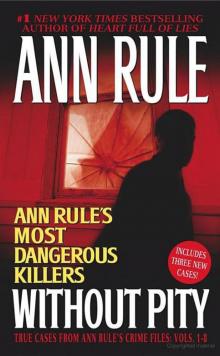 Without Pity: Ann Rule's Most Dangerous Killers
Without Pity: Ann Rule's Most Dangerous Killers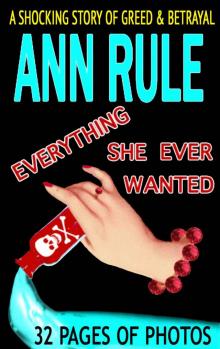 Everything She Ever Wanted
Everything She Ever Wanted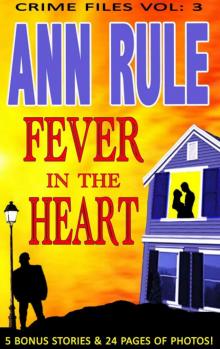 A Fever in the Heart and Other True Cases
A Fever in the Heart and Other True Cases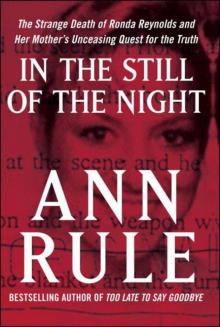 In the Still of the Night
In the Still of the Night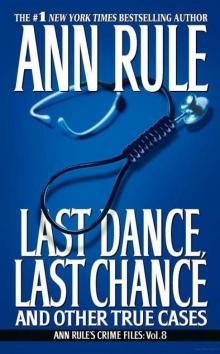 LAST DANCE, LAST CHANCE - and Other True Cases
LAST DANCE, LAST CHANCE - and Other True Cases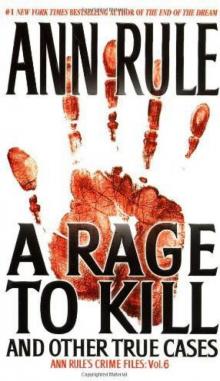 A Rage to Kill
A Rage to Kill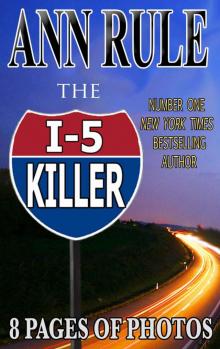 The I-5 Killer
The I-5 Killer The Stranger Beside Me
The Stranger Beside Me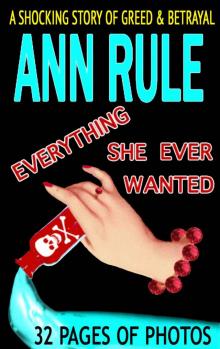 Everything She Ever Wanted: A True Story of Obsessive Love, Murder, and Betrayal
Everything She Ever Wanted: A True Story of Obsessive Love, Murder, and Betrayal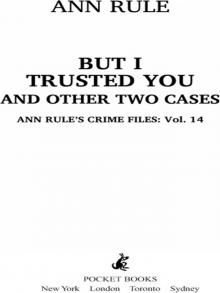 But I Trusted You
But I Trusted You Without Pity
Without Pity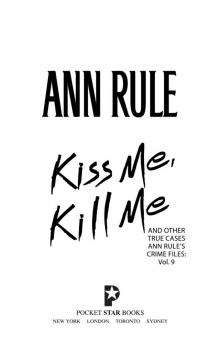 Kiss Me, Kill Me
Kiss Me, Kill Me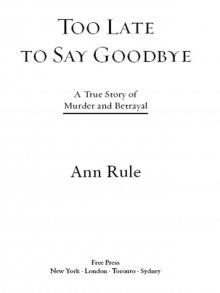 Too Late to Say Goodbye
Too Late to Say Goodbye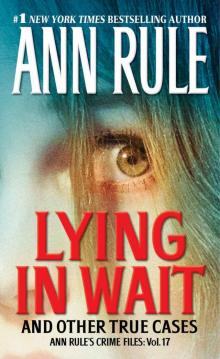 Lying in Wait
Lying in Wait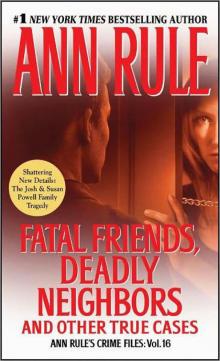 Fatal Friends, Deadly Neighbors
Fatal Friends, Deadly Neighbors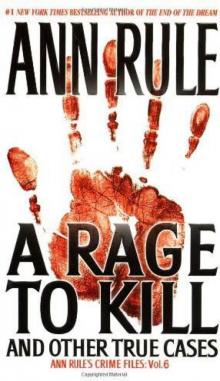 A Rage to Kill: And Other True Cases
A Rage to Kill: And Other True Cases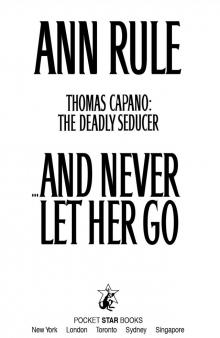 And Never Let Her Go
And Never Let Her Go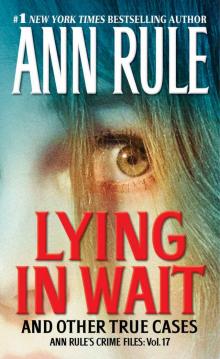 Lying in Wait Ann Rule's Crime Files Vol.17
Lying in Wait Ann Rule's Crime Files Vol.17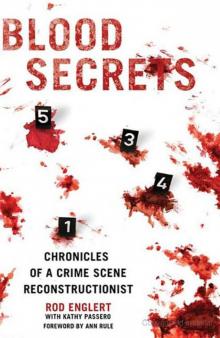 Blood Secrets: Chronicles of a Crime Scene Reconstructionist
Blood Secrets: Chronicles of a Crime Scene Reconstructionist No Regrets
No Regrets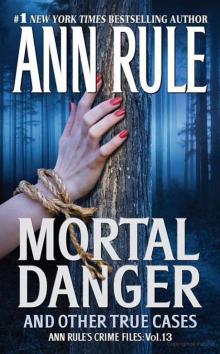 Mortal Danger
Mortal Danger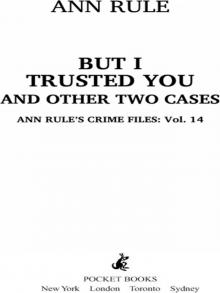 But I Trusted You: Ann Rule's Crime Files #14
But I Trusted You: Ann Rule's Crime Files #14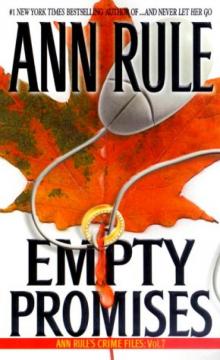 Empty Promises
Empty Promises Dead by Sunset
Dead by Sunset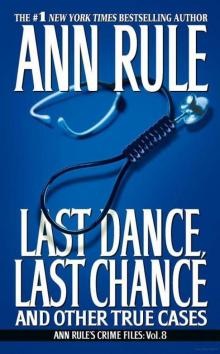 Last Dance, Last Chance
Last Dance, Last Chance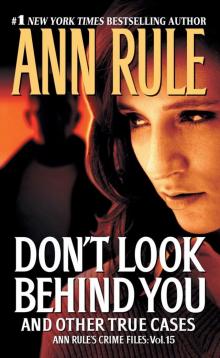 Don't Look Behind You
Don't Look Behind You